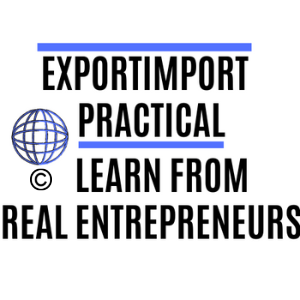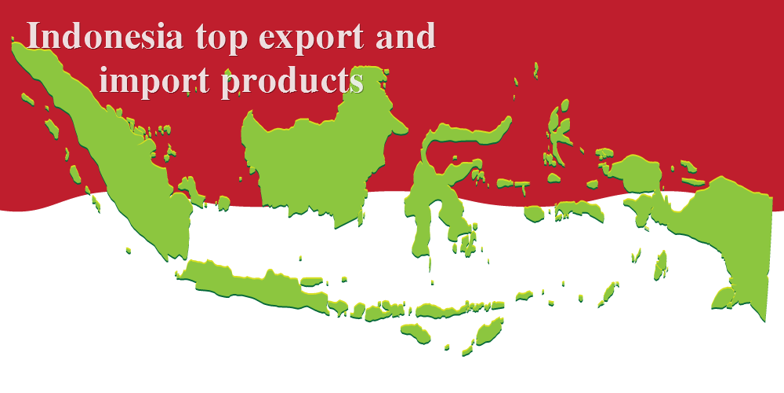Are you looking to start export- import business in Indonesia or trading with Indonesia? Are you interested to know Indonesia import and Indonesia exports?
This article will explain how to do export-import business with Indonesia, and what are top export-Import products in Indonesia, with what you could start.
After reading the article, you will have a basic knowledge of the trading environment in Indonesia. This article will give you the necessary information, ideas to help you build your own export-import business in the future.
If you want to start your international business, then we have created a guide with resources for exporters/importers, check it (here).
Also, we advise enrolling in our free, beginner online export/import course below:
Before moving any further regarding choosing the products for your business, and taking any further steps, we should be looking at some information about this country first.
1. About Indonesia export-import
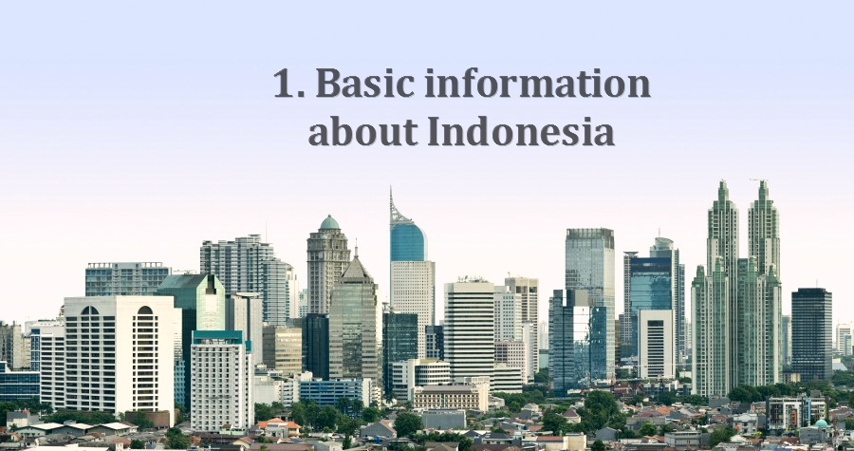
- Indonesia is attracting many new investors and international entrepreneurs to invest in Indonesia and set up their operations here.
- Many entrepreneurs realized that Indonesia has similar potential to China as it had in 2008 before the startup market exploded.
- Indonesia is a resource-rich country: oil, natural gas, tin, nickel, and bauxite, but still relatively poor, because of its large population.
- Over 55% of the labor force is engaged in agriculture. Rice is a staple food, but Indonesia also exports a significant amount of rubber, tea, coffee, and spices.
- The export-import or international trading industry is heavily involved in mineral processing and agricultural products.
1.1. Some economical statistics of Indonesia
Indonesia is ranked 25th in the export sector in the world economy. Indonesia’s total export in 2018 reached US$ 180.02 billion.
Indonesia imported US$188.7 billion worth of goods from around the globe in 2018, up by 5.9% since 2014 and up by 19.9% from 2017 to 2018.
The main export markets of are Japan, the United States, China, and Singapore. Indonesia imports a lot of goods from Japan, China, and Singapore.
Export products include oil and gas, electrical equipment, plywood, textiles, and rubber.
Indonesia’s main imports include machinery and equipment, chemicals, fuels, and food products
Indonesia is one of the attractive markets of the ASEAN Economic Community. It is thanks to the advantages of a large and rapidly growing population, an increasing degree of urbanization, and a large demand for consumer goods.
The consumption habits of the people in Indonesia have many things in common with other Asian people. Currently, from personal income about 50% spent on eating and drinking; When shopping, people often care about prices consistent with quality; they prefer low-weight products; fresh food, clean products.
1.2. Is it possible to start export-import business in Indonesia?
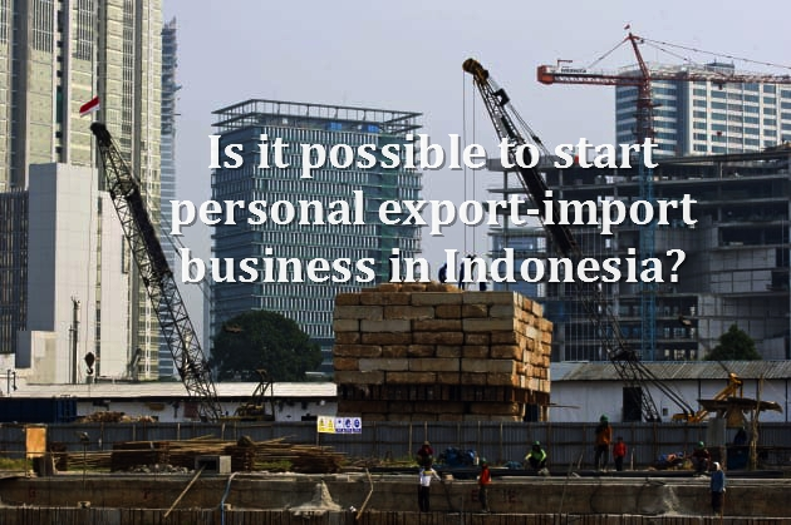
The answer is yes, most importantly, you have to prepare the knowledge and know-how to be ready to move into new markets. Of course, you should register a trading company in Indonesia, apply for the required licenses. We advise planning your activity properly, creating a business plan for your business would be beneficial. The more you plan your venture, the easier it will be to start your own export/import business.
One of the most effective ways to access markets, get export orders aborad for your import-export business in Indonesia is through large, prestigious international trade fairs that are held annually in Indonesia.
Normally major international fairs in Indonesia usually attract 40,000 to 50,000 visitors. This includes the participation of local Indonesian businesses and international businesses from 40 countries inside and outside the region.
Related reading: Export marketing for getting more orders.
1.3. Importing into the Indonesian market.
Indonesia import is growing rapidly, but before you start importing, here some questions you should answer first before you start importing into Indonesia:
- Are the products you are importing and exporting suitable for the Indonesian market?
- Which marketing channels do you aim to use if import and resell in the Indonesian market?
- Do you have a strategy to build and develop an import-export brand on the Indonesian market?
- Do you have a suitably-priced product for the Indonesian market?
- What is the level of profit you want on a product?
- When are you ready to start importing and reselling in Indonesia?
1.4. Exporting to the Indonesian market
If you are not Indonesian and you want to export to Indonesia, you should pay attention to the following factors.
- Indonesia consists of many Muslims, so if exporting to this market should pay attention to living practices and specific regulations (especially Halal regulations for food products).
- The distribution system in Indonesia is relatively good, you can coordinate with local business people in Indonesia to distribute goods. you can set up a representative office and distribution network of goods.
- You should notice that the income of Indonesians is relatively low, the price and promotion factors are important and should be suitable for local people.
- Indonesian businessmen are calm but not moderate, they value their position, give business cards when meeting.
- In order to make a good impression on the partners, you should express their interest. Gifts and commissions are quite popular, sometimes the partners will specify how much the commission is, you should not be surprised in this situation.
- Do not go to Indonesia during festivals because it usually takes a long time to wait for meeting partners.
Related reading: How to find buyers for your products?
Now, as you are familiar generally about the Indonesian market and the specifics, we are looking at Indonesia products, especially, what are top export-import products in Indonesia:
2.Top export products in Indonesia
Mineral fuels including oil: US$42 billion (23.3% of total exports)
Indonesia ranked 20th among oil-producing countries in the world, accounting for about 1% / day of the world for liquid fuels.
The oldest and largest oilfields in Indonesia are Duri, Minas, in the South Sumatra Basin and oil mine in Cepu, with an output of about 165,000 barrels/day.
Animal/vegetable fats, oils, waxes: $20.3 billion (11.3%)
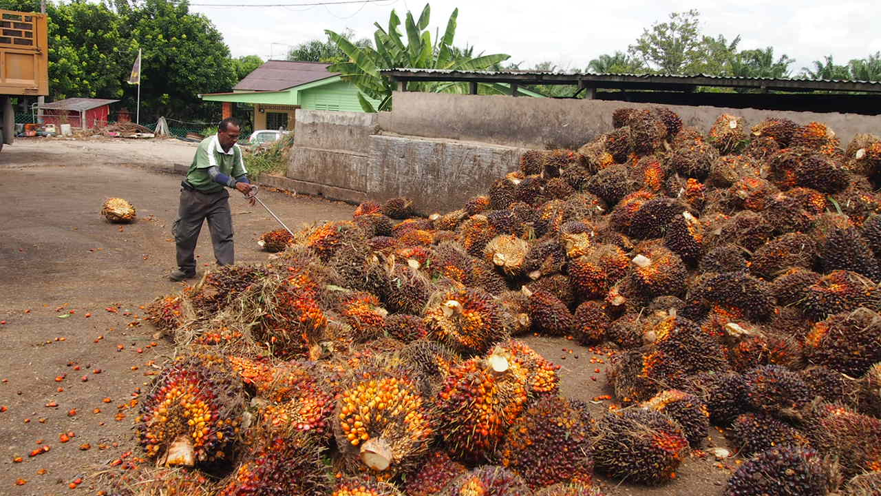
Indonesia and Malaysia produce 85% of the world’s crude palm oil. The two countries are gaining a lot of profits due to the increasing demand for CPO in the world while the supply is limited.
Although Indonesia is the largest palm oil exporter in the world, exports to the EU are on a declining trend. The EU wants to limit the use of palm oil in biofuel production to achieve its renewable energy targets.
The EU aims to stop using palm oil by 2030 even, the palm oil production process has been confirmed to be harmless to humans and the environment.
Leather and textile: $8.9 billion (4.9%)
With the opening and modernization being promoted strongly, the Indonesian sewing industry offers a lot of cooperation potential for foreign partners.
The related trade fairs in Indonesia attracted more than 590 companies from 27 countries. Including the world’s leading countries in the manufacturing of machinery as well as textile products such as China, Germany, Japan, Korea, India, and Switzerland.
Vehicles components: $7.6 billion (4.2%)
Currently, Indonesia and Thailand are the two countries with the largest automobile and motorbike industry in the ASEAN region.
In particular, Indonesia is the largest manufacturer of automotive components and spare parts … and has the potential to become a country specializing in manufacturing components for the sports cars, terrain vehicles, light trucks, and sedans.
Rubber, rubber articles: $6.4 billion (3.5%)
With a land area of about 3.5 million hectares nationwide, rubber plantations provide 85% of the raw material for the rubber industry.
Rubber price on the global market is currently at around 1.45 USD / kg, while the price Indonesian farmers sell it, is much lower, ranging from 7,000-7,500 rupiah/kg (0.5-0. 55 USD / kg).
Personal electronics, including computers: $5.9 billion (3.3%)
As one of the largest countries in Asia, with a population of over 250 million people, Indonesia is the fourth most populous country in the world.
However, the manufacturing of electronic devices, especially smartphones, has not been developed much. According to Nielsen market research years ago, only about 23% of people here own smartphones. But this number is growing exponentially.
Foxconn’s new plant in Indonesia will produce handsets, especially smartphones, to meet the nation’s own needs.
Foxconn often works with electronics manufacturers to produce handheld devices, tablets, and TVs.
Gems, precious metals: $5.6 billion (3.1%)
Indonesia is one of the few countries with rich minerals, especially gemstones. This is a new potential market for operators and jewelry businesses in this country. Indonesia is a competitor of India with the gems and jews, both countries have their own national deposits of precious stones.
Not only domestic customers but also foreign tourists love Indonesian gemstones. This is a favorable opportunity for jewelers to expand the market and promote the brand.
Ores, slag, ash: $5.3 billion (2.9%)
Indonesia has exported 33 million tons of nickel ore and 40 million tons of bauxite and is currently the largest tin exporter in the world.
As for coal, the Indonesian government will issue specific export control regulations, while 14 minerals must comply with the new regulations: copper, gold, silver, tin, lead, chromium and transparent, bauxite, iron and sand ores, iron, nickel, molybdenum, manganese, and antimony.
Indonesian coal is mainly exported to South Korea, the Philippines, Japan, China, Malaysia, India, Pakistan, Thailand, and Italy.
Footwear: $5.1 billion (2.8%)
Indonesia is ranked fourth in shoe production after China, India, and Vietnam. The Indonesian leather hat industry is facing a lot of difficulties because it imports over 60% of its raw materials to produce.
In the future, Indonesia will increase the import of leather materials from Malaysia, Myanmar, the Middle East, and African countries.
The footwear industry is being prioritized due to its development as an export-oriented, labor-intensive industry.
Along with the textile and apparel industry, the footwear industry is also about to enter the era of Industry 4.0, in order to be able to compete globally and increase exports.
Previous were just a few examples of the Indonesia export products. Previous were general categories, you can go deeper in each category and choose the products right for you. To get more ideas about what products could be exported in Indonesia, read export-import business ideas.
3. Top import products in Indonesia
Mineral fuels including oil: US$31.6 billion (16.7% of total imports)
Indonesia becomes a net importer of oil due to declining production while increasing demand.
In 2019, Indonesia’s oil demand reached 6.19 million barrels a day, while supply will be only 6.04 million barrels a day.
Personal electronics, computers: $27.2 billion (14.4%)
Export of computers, electronic products and components to the Indonesian market is declining due to new regulations of the Government of Indonesia, from 2018, products imported into this market must reach 70% billion localization rate.
50-60% of Samsung products are exported to Indonesia in the form of components and accessories.
Electrical machinery, equipment: $21.4 billion (11.4%)
The Government decided to apply the policy of restricting the import of used machinery in 2009 in order to facilitate the development of the domestic machinery manufacturing industry. The Ministry of Industry and Trade Ministry of Indonesia are currently discussing how long it will take to continue importing used machines.
Used machinery is imported mainly from China, Australia, Malaysia, USA, Japan and South Korea.
Iron, steel: $10.2 billion (5.4%)
Indonesia has an SNI quality management system (the Indonesian National Standard) for imported steel products. The country has issued Decision 82 to restrict iron and steel imports into Indonesia, applied from early 2017 for zinc corrugated iron and from February 28, 2017, to all other steel products.
The purpose of this move is to force businesses to cut part of imports and switch to buying from domestic factories.
The new rule will only allow the import of boron-containing alloy steels on the registered list. In addition, to be allowed to import this item, importers are required to submit additional documents attached to the sale contract to the competent authority.
Steel and metal exporters that want to export to Indonesia must also do a pre-quality checking. This checking is carried out by supervisors designated by Indonesia official and these organizations will send their supervisors to the factory while packing goods for export to Indonesia.
Plastics, plastic waste, plastic articles: $9.2 billion (4.9%)
In order to limit the import of plastic waste, its customs officers will step up inspection of imported goods. Indonesia will not stop importing plastic scrap completely, as plastic is still used in the recycling industry.
Vehicles: $8.1 billion (4.3%)
Indonesia will occupy the No. 1 position in Southeast Asia’s automobile production. Thus, Thai component manufacturers will turn to serve Indonesia and the Thai automobile industry will also rely on Indonesian demand.
Indonesia imposes two basic tariffs on cars: import tariffs, and luxury goods tax.
The import tax is 40% for complete units. If assembled as a complete knock-down (CKD), which is a kit of the completely non-assembled parts of a product, the import tax is 10% and mount as IKD (complete set of components), the tax is 7.5-8%.
Pharmaceuticals: $6.9 billion (3.7%)
There are currently 170 pharmaceutical companies operating in Indonesia and most of them produce and distribute drugs. The organic chemical, pharmaceutical and traditional medicine industries in Indonesia have continuously grown to serve the domestic demand.
Cereals: $3.8 billion (2%)
Indonesia emerged as the world’s second-largest wheat importer and increased grain imports after it imposed stricter regulations on corn imports.
Indonesia’s corn imports increased, due to demand for animal feed and hit a record 3.5 million tons in 2013/14, In 2015, Indonesia imported 1,890 tons of wheat for animal feed. The import of wheat for food is expected to increase due to economic growth.
Wheat for food is imported mainly from Australia, Canada and the United States.
Agricultural waste, for animal feed: $3.1 billion (1.6%)
Import of wheat-waste as Indonesia’s animal feed from Ukraine and Eastern European countries, as well as Argentina and maize mainly from Brazil and Argentina.
Conclusion
Although Indonesia has export import products for every taste and it is a country with great potentials in import and export, you should also be aware of risks, or unfavorable facilities, weak transportation.
Read about risk in export/import and how to overcome these.
Indonesians are generally quite friendly and honest in communication. Create good relationships with local people will help your import and export work smoothly. If you are looking to export to Indonesia, then you should have a local partner.
If you have serious plans to start your own exim business, then our online export-import courses and training programs, guides will help you during your way. You can use the resources below:
